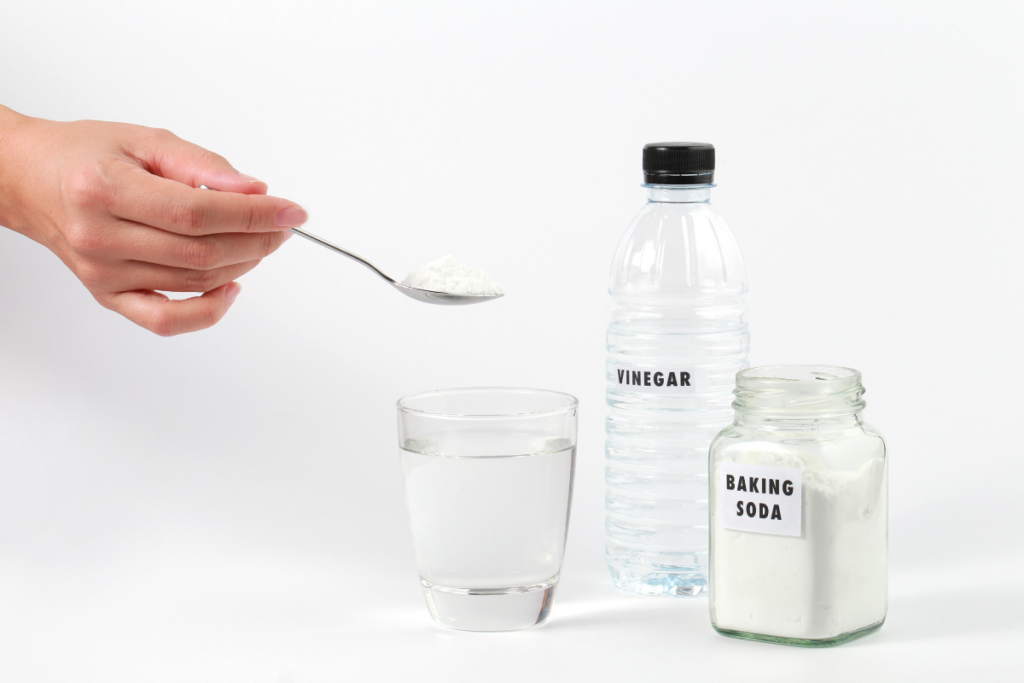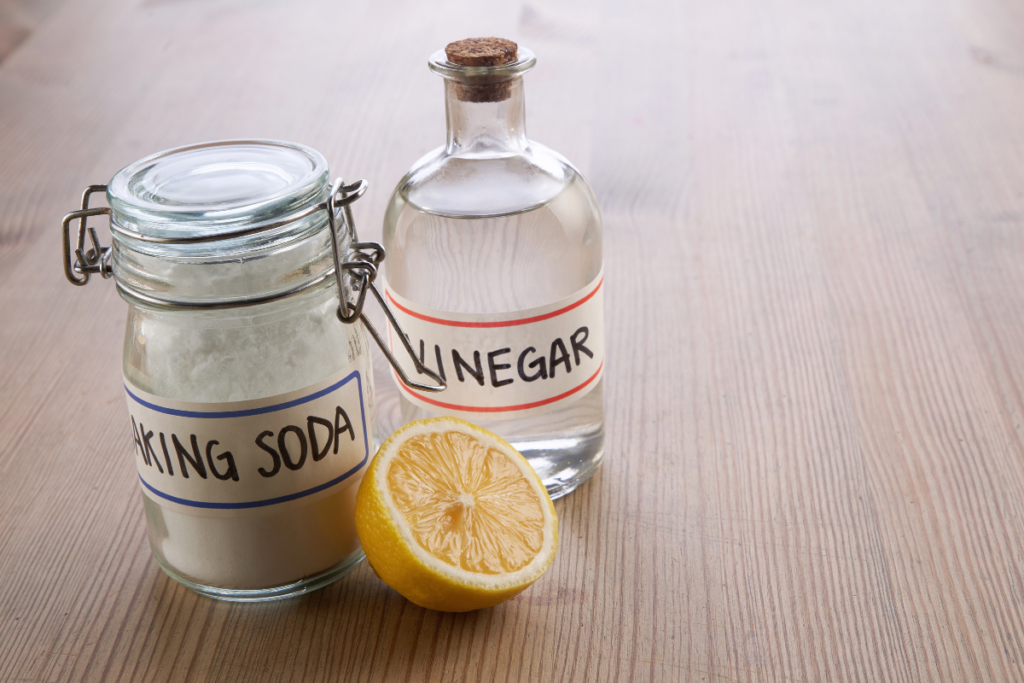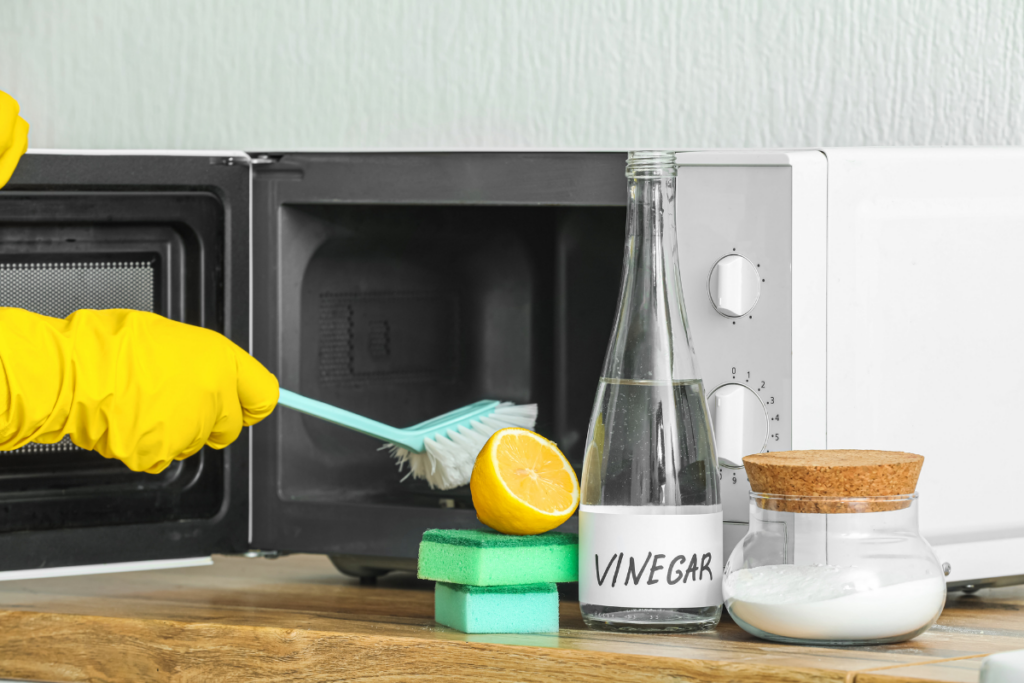Are you curious about what happens when you mix vinegar and baking soda?
You may have heard about this classic science experiment, but do you know why these two common household items react the way they do?
When combined, vinegar and baking soda create a chemical reaction that produces carbon dioxide gas, water, and a salt compound.
This reaction occurs because vinegar is an acid, and baking soda is a base.
When the two substances are mixed, the acid and base react with each other, creating carbon dioxide gas as a byproduct.
This reaction is also exothermic, meaning it releases heat as well.
While this reaction is often used in science experiments and for cleaning purposes, it’s important to handle these substances with care.
Mixing vinegar and baking soda can create a lot of pressure, which can cause a container to burst or even an explosion.
It’s important to follow proper safety precautions and use the right amount of each substance to avoid any accidents.
What Happens When You Mix Vinegar and Baking Soda?
If you’ve ever mixed vinegar and baking soda, you’ve probably seen the resulting fizzy reaction.

This reaction happens because vinegar is an acid and baking soda is a base.
When they come into contact, they undergo a chemical reaction that produces carbon dioxide gas.
The chemical equation for this reaction is:
NaHCO3 (sodium bicarbonate, or baking soda) + CH3COOH (acetic acid, or vinegar) -> NaCH3COO (sodium acetate) + CO2 (carbon dioxide) + H2O (water)
The carbon dioxide gas produced in this reaction is what causes the bubbles and fizzing that you see.
The reaction also produces sodium acetate and water as byproducts.
It’s important to note that while this reaction can be fun to watch, it’s not particularly useful for cleaning or other practical purposes.
In fact, the reaction can be quite messy, so it’s best to avoid mixing vinegar and baking soda unless you’re doing it for a specific experiment or demonstration.
Overall, mixing vinegar and baking soda is a simple and fun science experiment that can help you learn more about chemical reactions and the properties of different substances.
Just be sure to do it safely and avoid making a mess!
Practical Applications
Cleaning Uses
Mixing vinegar and baking soda is a popular natural cleaning solution.
The reaction between the two ingredients produces carbon dioxide, which can help lift dirt and grime.
Here are some practical cleaning uses for vinegar and baking soda:
Drain Cleaner
Pour a cup of baking soda down the drain, followed by a cup of vinegar. Let the mixture sit for about 15 minutes before flushing it with hot water.
Oven Cleaner
Mix baking soda and water to make a paste and spread it over the inside of your oven.
Let it sit overnight before wiping it away with a damp cloth. Spray vinegar over any remaining residue and wipe it away.
Stain Remover
Mix baking soda and vinegar to make a paste and apply it to stains on clothing or carpets. Let it sit for a few minutes before washing or rinsing away.
Educational Experiments
The reaction between vinegar and baking soda is also a popular science experiment for kids.

Here are some educational experiments you can try:
Volcano
Create a volcano by building a cone out of paper mache or clay. Fill it with baking soda and add vinegar to create a fizzy eruption.
Balloon Inflation
Add baking soda to a deflated balloon and attach it to the top of a bottle filled with vinegar. Shake the baking soda into the vinegar and watch as the balloon inflates.
Rocket Launch
Create a rocket by attaching a film canister to a cardboard tube with fins. Fill the canister with baking soda and add vinegar to create a chemical reaction that launches the rocket.
Remember to always use caution when conducting experiments with vinegar and baking soda, especially when working with children.
Safety Precautions
When working with vinegar and baking soda, it’s important to take some safety precautions to prevent any accidents or injuries.
Here are some things to keep in mind:
Wear Protective Gear
While vinegar and baking soda are generally safe to handle, it’s still a good idea to wear protective gear such as gloves and goggles.
This is especially important if you’re working with large quantities of these substances or if you’re mixing them in a confined space.
Avoid Ingesting or Inhaling
Both vinegar and baking soda are safe to consume in small amounts, but ingesting or inhaling large quantities can be harmful.
Avoid eating or drinking anything containing vinegar or baking soda, and make sure to work in a well-ventilated area to prevent inhaling any fumes.
Don’t Mix with Other Chemicals
Mixing vinegar and baking soda with other chemicals can be dangerous and should be avoided.
For example, mixing vinegar and bleach can create toxic fumes that can be harmful or even deadly.

Store Properly
When storing vinegar and baking soda, make sure to keep them in their original containers and store them in a cool, dry place away from direct sunlight.
Make sure to keep them out of reach of children and pets.
Clean Up Spills Immediately
If you spill vinegar or baking soda, clean it up immediately to prevent anyone from slipping or falling.
Use a damp cloth to clean up any spills, and dispose of the cloth and any contaminated materials properly.
By following these safety precautions, you can work with vinegar and baking soda safely and avoid any accidents or injuries.
Impact On Environment
Mixing vinegar and baking soda can have an impact on the environment, both positive and negative.
Positive Impact
The reaction between vinegar and baking soda produces carbon dioxide gas, which can be used to extinguish small fires.
This makes it a safer and more environmentally friendly alternative to traditional fire extinguishers, which often contain harmful chemicals.
Additionally, the resulting solution of the reaction can be used as a natural cleaner.
It is non-toxic and safe for the environment, making it a great alternative to harsh chemical cleaners.
Negative Impact
While the reaction between vinegar and baking soda is generally safe for the environment, it can be harmful if large amounts are used or if it is not disposed of properly.
Excess carbon dioxide can contribute to climate change, so it is important to only use small amounts of vinegar and baking soda when extinguishing fires or cleaning.
Additionally, the solution should be disposed of properly, as pouring it down the drain can cause clogs and damage to pipes.
Overall, while there are both positive and negative impacts of mixing vinegar and baking soda on the environment, it can be a safe and effective alternative to traditional cleaning and fire extinguishing methods when used responsibly.

Key Takeaways
When you mix vinegar and baking soda, a chemical reaction occurs that creates carbon dioxide gas, water, and a salt called sodium acetate.
Here are some key takeaways to keep in mind:
- Vinegar is an acid and baking soda is a base.
- When they are mixed together, they react to neutralize each other and create a new substance.
- The reaction between vinegar and baking soda produces carbon dioxide gas.
- This gas is what causes the bubbles and fizzing that you see when you mix them together.
- The reaction also produces water and a salt called sodium acetate.
- The sodium acetate is what is left behind after the reaction is complete.
- The reaction between vinegar and baking soda is exothermic, which means that it releases heat.
- You can feel the heat if you touch the container that the mixture is in.
- The amount of vinegar and baking soda that you use will affect the reaction.
- If you use too much of one or the other, the reaction may not be as strong or may not occur at all.
Overall, mixing vinegar and baking soda can be a fun and educational experiment that demonstrates the principles of chemistry.
Just be sure to do it in a safe and controlled environment, and don’t expect any explosive reactions!
